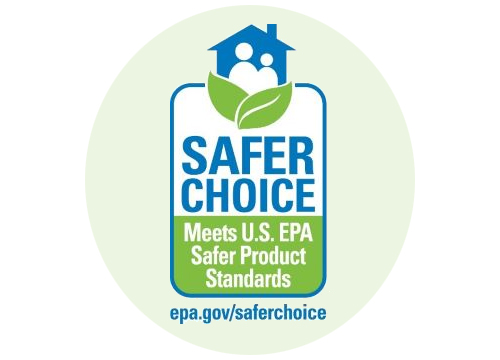Contaminants of Emerging Concern in wastewater
Contaminants of Emerging Concern (CECs) are natural or manmade chemicals that have been found in waterbodies that may cause ecological or human health impacts and are not currently regulated. CECs in wastewater can range from pharmaceuticals and personal care product ingredients to industrial chemicals. We are working to better understand the sources and effects of CECs in wastewater.
Why this matters
Around the world, scientists have measured antidepressant medications, artificial sweeteners, microscopic bits of plastic, among hundreds of other chemicals, in lakes, rivers, and marine water. These are examples of Contaminants of Emerging Concern or CECs. Some of these contaminants are at levels so low they could not be measured by previous technology.
At these low levels, most CECs do not cause immediate harm to aquatic life. Instead, they can cause more subtle effects such as impairing reproduction or immune response. Over a lifetime, repeated exposure to hundreds of chemicals may add up to serious problems. The Orca task force determined that toxic contaminants in the environment are a major factor limiting the recovery of southern resident killer whales.
Large gaps remain in our understanding of where chemicals end up (environmental fate) and health effects of the tens of thousands of chemicals registered for use in commerce. In the United States, only pesticides, pharmaceuticals, and some industrial chemicals must be demonstrated as safe by the manufacturer before they are approved for use. The remaining chemicals that are used regularly in businesses, industries, and in homes are not subject to consistent review.
How to CECs end up in wastewater?
Many of these chemicals come from human waste and other sources that end up at wastewater treatment facilities. Wastewater treatment facilities and septic systems were not designed to treat and remove CECs. Wastewater facilities were originally designed to handle easily degradable organic material, like human waste, at high concentrations. CECs tend to be larger, more complex compounds that are found in low concentrations. Traditional treatment may remove some types of CECs from waste; however, there are multiple common CECs that are not removed by standard biological treatment. There are some newer, more advanced treatment technology options that can remove these contaminants.
In wastewater that comes from homes, some CECs are introduced directly, such as through flushing unused pharmaceuticals (which you shouldn't do - see below). Additionally, CECs that are ingredients in household products are contributed indirectly through day-to-day activities such as bathing and laundry. For example, microplastics enter wastewater from laundering synthetic material like fleece jackets, microfiber towels, and polyester materials. In most products the CECs in them may only make up a fraction of the ingredients, but widespread use of products means these chemicals add up and are concentrated at wastewater treatment facilities.
What is Ecology doing?
We addressing CECs in multiple ways, beyond wastewater. Because many CECs are not regulated to the same degree as other chemicals, we support efforts that help reduce multiple types of pollution, including CECs.’
We're continuing to work on policy and/or budget requests to prevent the use and release of these chemicals. Additionally, our Safer Products for Washington program aims to reduce exposure to toxic chemicals from consumer products, which can help prevent CECs from reaching the environment.
We're also working with our partner agencies and other organizations to discuss and develop a plan to address pharmaceuticals, identify priority actions for source control, and potential wastewater treatment methods. We also periodically review information as new science emerges and adaptively manage the chemical action plans.
We prepared a informational paper that gathered and reviewed previously published research results to provide an overview of the science behind removing CECs from wastewater. We reviewed over 280 scientific studies and compiled the results on how effective some wastewater treatment technologies are at removing common CECs.
We are working with wastewater treatment plants to remove nutrients from their wastewater. A secondary benefit from removing nutrients is potentially using more advanced treatment technologies that may also remove toxics. Recent advances in treatment technologies have allowed more removal of nutrients and other pollutants of concern that contribute to poor water quality. Advanced wastewater treatment refers to any treatment beyond conventional secondary treatment, such as enhanced nutrient removal, chemical addition, and filtration.
What can you do to reduce CECs?
The best thing that you can do is learn about what is in your common household products and how to safely dispose of them. Many products contain toxic chemicals that make them hazardous — even items you can buy from your local grocery or hardware store. Some of these chemicals require special disposal and should not be dumped down any drain or thrown in the trash to end up at a landfill. When hazardous waste is not properly disposed, it can contribute toxic chemicals in landfill leachate, which is sent to wastewater treatment facilities.
As you use up cleaning products, consider searching for safer alternatives or making your own from common household ingredients. Finally, you can limit direct exposure by learning about ingredients in personal care products.
Also, you can make sure to safely dispose of your unwanted over-the-counter and prescription medication, including pet medication. The Dept. of Health Safe Medicine Return webpage has more information. Find where you can drop-off medicine and order free mail-back supplies at medtakebackwashington.org or by calling 844-4-Take-Back (844-482-5322).
The best option is to buy safer products
Safer Choice is the U.S. Environmental Protection Agency (EPA)’s product certification and labeling program.
This database includes a list of roughly 2,500 products that EPA certified as safe.
Most of the products listed in the database are for laundry and cleaning, but it also includes products ranging from floor finishes to pet care products.
We also have other helpful information on disposal for different types of waste:
- Hazardous household waste
- Electronics recycling
- Safe Medication Return (Dept. of Health)
- Pharmaceutical disposal – for health care workers
Related links
Contact information
Madison Hattaway (she/her)
Contaminants of Emerging Concern Coordinator
Madison.hattaway@ecy.wa.gov
360-628-2924


